
The Enchanting Ring of Kerry: Ireland's Scenic Treasure
Discover the Ring of Kerry, Ireland's scenic drive with stunning landscapes, historic sites, and charming villages that offer a true taste of Irish culture.
The Ring of Kerry is a scenic drive in County Kerry, Ireland. It spans 179 kilometers and showcases some of Ireland's most breathtaking landscapes. This route takes you through charming villages, rugged coastlines, and lush green hills. The journey around the Ring of Kerry is filled with historical and cultural landmarks. One of the highlights of the Ring of Kerry is Killarney National Park. This park is home to stunning lakes, majestic mountains, and ancient woodlands. Visitors can explore Muckross House and Gardens, a 19th-century mansion set against the backdrop of the stunning Muckross Lake. The park also offers numerous hiking and cycling trails for outdoor enthusiasts. As you continue along the route, you'll encounter the picturesque town of Kenmare, known for its colorful buildings, cozy cafes, and traditional Irish pubs. Another must-see stop is the Skellig Michael, an ancient monastic site perched on a rocky island. This UNESCO World Heritage Site offers a glimpse into Ireland's early Christian history. The Ring of Kerry also boasts some of the most beautiful beaches in Ireland. Derrynane Beach and Rossbeigh Beach are perfect spots to relax and soak in the natural beauty. The drive along the Atlantic coastline offers panoramic views of the ocean and dramatic cliffs, making it a photographer's paradise.
Local tips in Ring of Kerry
- Start your drive early in the morning to avoid crowds and fully enjoy the scenery.
- Be prepared for narrow roads and take your time navigating the twists and turns.
- Pack a picnic and stop at one of the many scenic spots along the route.
- Bring a rain jacket, as weather can change quickly in this region.
- Consider visiting in the off-season for a more peaceful experience.
The Enchanting Ring of Kerry: Ireland's Scenic Treasure
The Ring of Kerry is a scenic drive in County Kerry, Ireland. It spans 179 kilometers and showcases some of Ireland's most breathtaking landscapes. This route takes you through charming villages, rugged coastlines, and lush green hills. The journey around the Ring of Kerry is filled with historical and cultural landmarks. One of the highlights of the Ring of Kerry is Killarney National Park. This park is home to stunning lakes, majestic mountains, and ancient woodlands. Visitors can explore Muckross House and Gardens, a 19th-century mansion set against the backdrop of the stunning Muckross Lake. The park also offers numerous hiking and cycling trails for outdoor enthusiasts. As you continue along the route, you'll encounter the picturesque town of Kenmare, known for its colorful buildings, cozy cafes, and traditional Irish pubs. Another must-see stop is the Skellig Michael, an ancient monastic site perched on a rocky island. This UNESCO World Heritage Site offers a glimpse into Ireland's early Christian history. The Ring of Kerry also boasts some of the most beautiful beaches in Ireland. Derrynane Beach and Rossbeigh Beach are perfect spots to relax and soak in the natural beauty. The drive along the Atlantic coastline offers panoramic views of the ocean and dramatic cliffs, making it a photographer's paradise.
When is the best time to go to Ring of Kerry?
Iconic landmarks you can’t miss
Killarney National Park
Explore the breathtaking landscapes, rich biodiversity, and historical sites of Killarney National Park in County Kerry, Ireland.

Muckross House
Discover the captivating history and stunning landscapes at Muckross House, a historic gem in Killarney National Park, Ireland.

Ross Castle
Discover the enchanting charm of Ross Castle, a historic gem nestled by Lough Leane, showcasing Ireland's rich heritage and breathtaking landscapes.

Torc Waterfall
Experience the breathtaking beauty of Torc Waterfall, a stunning natural wonder in Killarney National Park, perfect for nature lovers and adventurers.

The Kerry Bog Village Museum
Explore the rich heritage of County Kerry at The Kerry Bog Village Museum, where history, nature, and culture come alive in a picturesque setting.

Staigue Stone Fort
Explore the ancient Staigue Stone Fort in County Kerry, a remarkable historical landmark that offers breathtaking views and a glimpse into Ireland's rich heritage.

Cahergal Stone Fort
Discover the enchanting Cahergal Stone Fort in Co. Kerry, where history and breathtaking landscapes come together for an unforgettable experience.

Derrynane House
Explore the historic Derrynane House, a national museum in County Kerry, offering stunning gardens and a glimpse into Ireland's rich cultural heritage.

Kenmare Stone Circle
Discover the ancient mysteries of the Kenmare Stone Circle, a captivating prehistoric site in the heart of County Kerry's stunning landscapes.

Sneem Sculpture Trail
Experience the captivating fusion of art and nature at the Sneem Sculpture Trail in County Kerry, Ireland, where creativity meets breathtaking landscapes.

Ring of Kerry Tours
Explore the breathtaking landscapes, charming villages, and rich culture of the iconic Ring of Kerry, a must-visit destination in Ireland.

Ring of Kerry(Fáinne Chiarraí)
Discover the breathtaking beauty of the Ring of Kerry, a scenic route in Ireland featuring stunning landscapes, charming villages, and rich cultural heritage.

Leacanabuaile Ring Fort
Experience the captivating history and breathtaking landscapes at Leacanabuaile Ring Fort, a hidden gem in the heart of Co. Kerry, Ireland.

Derrynane National Historic Park
Discover the natural splendor and historical significance of Derrynane National Historic Park in County Kerry, a must-see destination for every traveler.

Unmissable attractions to see
Bantry House
Experience the blend of history and natural beauty at Bantry House, a stunning landmark in Co. Cork, Ireland, perfect for tourists and history lovers alike.

Killarney Racecourse & Ross Golf Course
Discover the excitement of Killarney Racecourse & Ross Golf Course, where thrilling horse races meet stunning landscapes in the heart of Co. Kerry.

Falconry Kerry (in Killarney)
Discover the thrilling world of falconry in Killarney, where majestic birds of prey soar against stunning landscapes, offering an unforgettable experience for all ages.

Sneem Sculpture Trail
Explore the stunning Sneem Sculpture Trail in County Kerry, an outdoor gallery blending art and nature amidst breathtaking Irish landscapes.

The Old Abbey of the Holy Cross
Discover the serene beauty and historical significance of The Old Abbey of the Holy Cross in Cahersiveen, a hidden gem in County Kerry, Ireland.
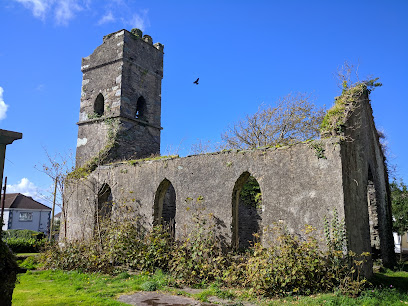
River Caragh Viewing Point
Discover the stunning vistas of River Caragh Viewing Point in County Kerry, a must-visit stop on your Irish adventure.

Killarney Races
Discover the excitement of horse racing in the stunning landscapes of Killarney, Co. Kerry – a perfect day out for tourists and locals alike.

Dooks Beach
Discover the serene beauty of Dooks Beach in Co. Kerry, where golden sands meet breathtaking coastal views, perfect for relaxation and adventure.

Owengarriff River
Experience the serene beauty of Owengarriff River in Killarney National Park, a hidden gem perfect for nature lovers and adventure seekers.

Ballykissane Monument
Explore Ballykissane Monument in Co. Kerry, where history and stunning river views intertwine for an unforgettable experience.

Sneem Falls
Experience the breathtaking beauty of Sneem Falls, a serene waterfall in County Kerry, perfect for nature lovers and adventure seekers alike.

Charles De Gaulle Memorial
Explore the Charles De Gaulle Memorial in Co. Kerry, a serene tribute to Franco-Irish relations surrounded by stunning Irish landscapes.
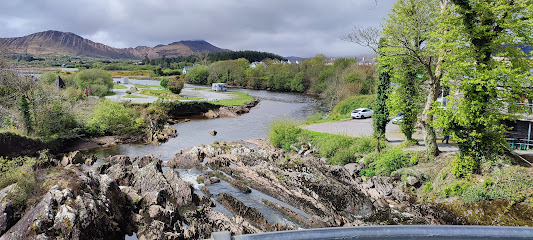
Sea Synergy Marine Awareness Centre | Waterville Things to do
Explore marine biodiversity and conservation at Sea Synergy Marine Awareness Centre in Waterville, Co. Kerry, an engaging experience for all ages.

Glacier Lake
Explore the serene beauty of Glacier Lake in Co. Kerry, Ireland, where stunning landscapes and tranquility await every visitor.
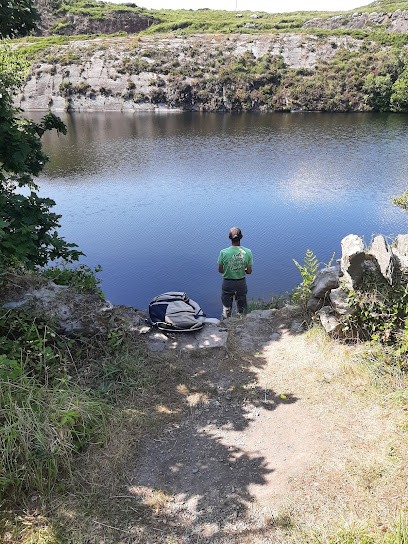
Killarney Falconry
Explore the enchanting world of birds of prey at Killarney Falconry in County Kerry, where nature and adventure meet in breathtaking surroundings.

Essential places to dine
Porterhouse Restaurant
Experience the best of Irish cuisine at The Porterhouse Restaurant in Killarney - where local flavors meet a warm gastropub atmosphere.

Cronins Restaurant
Discover the authentic flavors of Ireland at Cronins Restaurant in Killarney - where local ingredients meet warm hospitality.

The Lobster Bar & Restaurant
Experience fresh and flavorful seafood at The Lobster Bar & Restaurant in scenic Waterville, Co. Kerry – a true taste of Ireland's coastal cuisine.

O'Carroll's Cove Restaurant & Bar
Experience exceptional dining at O'Carroll's Cove Restaurant & Bar on the breathtaking Ring of Kerry – where culinary delights meet stunning coastal views.

Caragh Restaurant & Lounge Bar
Experience authentic Irish cuisine at Caragh Restaurant & Lounge Bar in Killarney - where every meal tells a story.

Bricín Restaurant and Boxty House
Experience authentic Irish cuisine at Bricín Restaurant & Boxty House in Killarney – home of traditional boxty dishes and local crafts.

Dooley's Seafood & Steak House Waterfront Bar & Restaurant
Experience exquisite seafood and grilled delights at Dooley's Seafood & Steak House overlooking the stunning landscapes of Waterville.

Hannigans Bar, Restaurant & Terrace
Discover the flavors of Ireland at Hannigans Bar, Restaurant & Terrace – where every meal is an experience surrounded by stunning scenery.

The Mad Monk by Quinlans
Experience the best of Killarney’s seafood at The Mad Monk by Quinlans - where every dish celebrates local flavors.
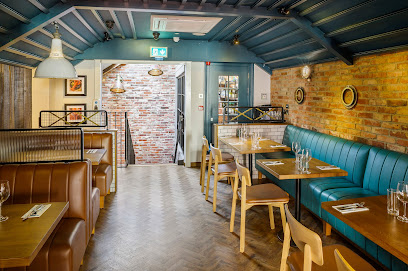
Kayne's Bar & Brasserie
Experience the best of Irish cuisine at Kayne's Bar & Brasserie in Killarney – where every meal is a celebration of local flavors.

The Village Kitchen
Experience authentic Irish cuisine at The Village Kitchen in Sneem – where every dish tells a story of local flavors and warm hospitality.

Flesk Bar & Restaurant
Experience authentic Irish cuisine at Flesk Bar & Restaurant in Killarney – where local flavors meet warm hospitality.

Mulcahys
Discover the culinary excellence of Mulcahys in Kenmare - where local flavors meet exceptional dining experiences.

Beaufort Bar & Restaurant
Discover authentic Irish cuisine and warm hospitality at Beaufort Bar & Restaurant in scenic Killarney.

Lime Tree Restaurant
Discover culinary excellence at Lime Tree Restaurant in Kenmare – where local ingredients meet Irish tradition.

Markets, malls and hidden boutiques
Ladies' View Gift Store Cafe Bar & Roof Terrace
Experience the best of shopping and dining at Ladies' View Gift Store Café Bar & Roof Terrace, where stunning views meet local charm in Killarney.

Killarney Outlet Centre
Explore the Killarney Outlet Centre for a unique shopping experience with diverse brands and delightful cafes in the heart of Killarney.

Avoca Molls Gap Shop & Café
Experience the perfect blend of shopping and dining at Avoca Molls Gap Shop & Café, a must-visit in the scenic Ring of Kerry.

Skellig Gift Store
Discover authentic Irish crafts and unique souvenirs at Skellig Gift Store, your gateway to the essence of Co. Kerry's rich heritage.
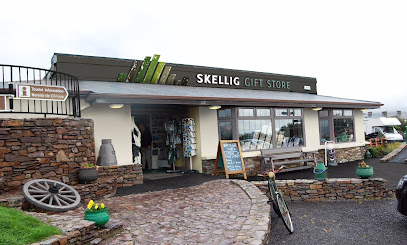
Aran Sweater Market
Explore the Aran Sweater Market for authentic Irish knitwear, unique gifts, and a taste of Killarney's rich textile heritage.

Quills Woollen Market
Discover the charm of Ireland at Quills Woollen Market, where authentic Irish goods meet traditional craftsmanship in the heart of Killarney.
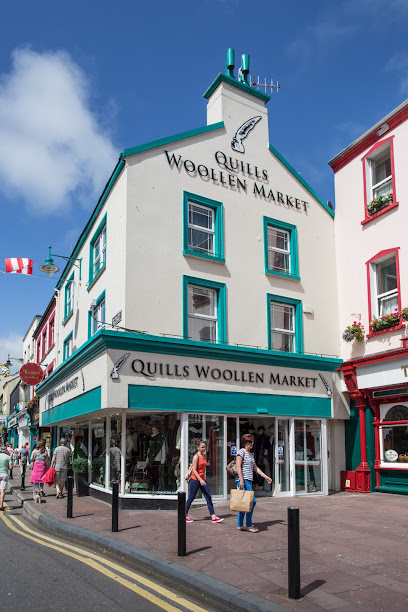
MacBees Boutique Killarney
Explore unique women's fashion at MacBees Boutique in Killarney, where style meets comfort in a charming shopping experience.

The White Room
Explore The White Room in Kenmare for a unique selection of home goods, children's clothing, and exquisite linens that capture the essence of Irish charm.

Finnegan's Corner
Explore Finnegan's Corner in Kenmare for a delightful selection of toys, outdoor gear, and unique souvenirs that capture the essence of County Kerry.

Kilkenny Design
Explore Kilkenny Design in Killarney, where authentic Irish craftsmanship meets a delightful shopping experience filled with unique gifts.

Mackens of Ireland Limited
Explore Mackens of Ireland Limited for exquisite handcrafted jewelry that captures the essence of Ireland's beauty and craftsmanship.

Blackthorn Gift Shop
Explore Blackthorn Gift Shop in Killarney for unique Irish gifts and handcrafted treasures that capture the spirit of Ireland.

The Works
Discover unbeatable deals on art supplies, books, crafts, and more at The Works, a discount store located in Killarney Outlet Centre.
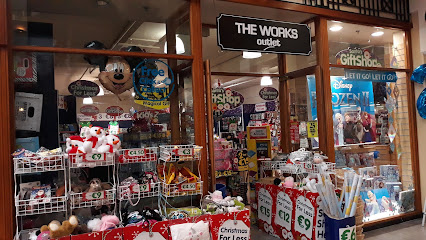
Foley's Irish Crafts
Explore Foley's Irish Crafts in Kenmare for authentic Irish gifts, handcrafted treasures, and a taste of local culture.

Handy Stores
Discover unique gifts and local crafts at Handy Stores in Killarney, the perfect shopping destination for tourists seeking memorable souvenirs.

Essential bars & hidden hideouts
J.M. Reidy's
Discover J.M. Reidy's in Killarney: A must-visit pub blending traditional Irish charm with a vibrant dining experience.
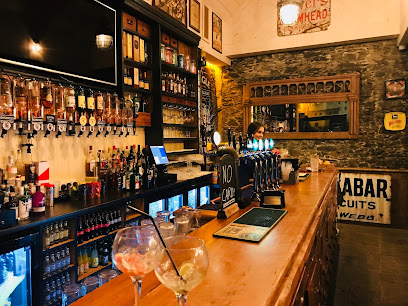
Murphys Bar, Restaurant & Townhouse Killarney
Discover the heart of Killarney at Murphys Bar, a charming spot for authentic Irish food, drinks, and unforgettable experiences.

The Shire Bar & Cafe
Experience the perfect blend of breakfast delights and vibrant nightlife at The Shire Bar & Cafe in Killarney, where every meal is a celebration.

Danny Mann Pub
Danny Mann Pub in Killarney offers an authentic Irish experience with delicious food, refreshing drinks, and live music in a charming atmosphere.
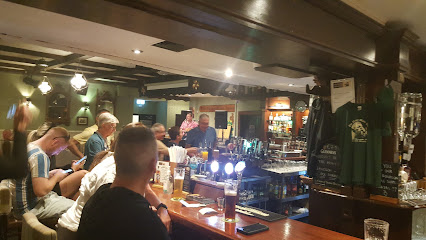
O'Connors Traditional Pub
Discover the heart of Killarney at O'Connors Traditional Pub, where lively music and authentic Irish cuisine create an unforgettable experience.

O'Carroll's Cove Restaurant & Bar
Discover the perfect blend of traditional Irish cuisine and breathtaking views at O'Carroll's Cove Restaurant & Bar on the scenic Ring of Kerry.

Celtic Whiskey Bar & Larder
Discover the Celtic Whiskey Bar & Larder in Killarney, where Irish whiskey meets delectable gastropub cuisine in a cozy atmosphere.
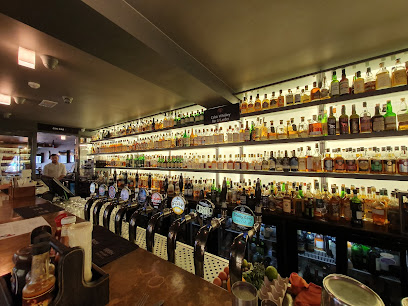
The Red Fox Inn
Discover the charm of The Red Fox Inn, a traditional Irish pub in Co. Kerry, offering delicious food, drinks, and vibrant local culture.

Hannigans Bar, Restaurant & Terrace
Discover the vibrant atmosphere and delicious local cuisine at Hannigans Bar, Restaurant & Terrace in the heart of Killarney.

Courtney's Bar
Discover the charm and warmth of Courtney's Bar, a Killarney gem offering local brews, hearty meals, and a lively atmosphere.

The Golden Nugget Bar & Restaurant
Experience the warmth of Irish hospitality at The Golden Nugget Bar & Restaurant, a delightful spot for food lovers in Killarney.

Speakeasy Bar
Discover Killarney's vibrant culture at this iconic Irish pub, where local brews and live music create unforgettable experiences.

The Lane (Fun Food & Awesome Cocktails)
Savor the best of Killarney at The Lane, where delicious brunch and exquisite cocktails come together in a vibrant atmosphere.

Jimmy Brien's Bar
Discover the lively spirit of Killarney at Jimmy Brien's Bar, a premier sports bar offering great food, drinks, and a vibrant atmosphere.

The Sportsmans Bar
Discover the heart of Killarney at The Sportsmans Bar, where local flavors meet Irish charm in a lively atmosphere.
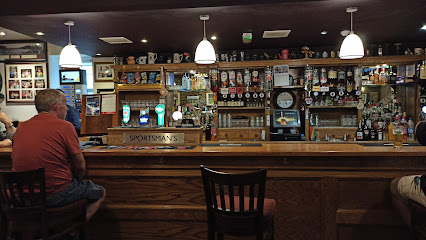
Local Phrases about Ring of Kerry
-
- HelloDia duit
[dee-uh gwitch] - GoodbyeSlán
[slawn] - YesTá
[taw] - NoNíl
[neel] - Please/You're welcomeLe do thoil
[leh duh hull] - Thank youGo raibh maith agat
[guh rev mah agut] - Excuse me/SorryTá brón orm
[taw broan orum] - How are you?Conas atá tú?
[kun-us ah-taw too] - Fine. And you?Tá mé go maith. Agus tú?
[taw may goh mah. ah-gus too] - Do you speak English?An labhraíonn tú Béarla?
[ahn low-reen too bayr-la] - I don't understandNí thuigim
[nee hoo-ig-im]
- HelloDia duit
-
- I'd like to see the menu, pleaseBa mhaith liom an billeog a fheiceáil, le do thoil
[bah wah lum on bill-ohg ah eck-ayl, leh duh hull] - I don't eat meatNí ithim feoil
[nee ih-him foh-il] - Cheers!Sláinte!
[slawn-cheh] - I would like to pay, pleaseBa mhaith liom íoc, le do thoil
[bah wah lum eek, leh duh hull]
- I'd like to see the menu, pleaseBa mhaith liom an billeog a fheiceáil, le do thoil
-
- Help!Cabhair!
[cah-ver] - Go away!Imigh uaim!
[im-ee oom] - Call the Police!Glan na Gardaí!
[glahn nah gar-dee] - Call a doctor!Glan dochtúir!
[glahn dohk-too-ir] - I'm lostTá mé caillte
[taw may kyle-teh] - I'm illTá mé tinn
[taw may chin]
- Help!Cabhair!
-
- I'd like to buy...Ba mhaith liom ceannach...
[bah wah lum kay-nukh] - I'm just lookingTáim ag féachaint amach
[tawm egg fay-ah-kint ah-mock] - How much is it?Cé mhéad atá air?
[kay vayd ah-taw air] - That's too expensiveTá sé sin ró-dhaor
[taw shay shin row-yuhr] - Can you lower the price?An féidir leat an praghas a laghdú?
[ahn fay-dur lat on prah-guhs ah lay-goo]
- I'd like to buy...Ba mhaith liom ceannach...
-
- What time is it?Cén t-am é?
[kayn tahm ay] - It's one o'clockTá sé a haon a chlog
[taw shay ah hayn ah khlog] - Half past (10)Leathuair tar éis a deich
[lah-hoo-ir tar es ah deh] - MorningMadraí
[muh-dree] - AfternoonTráthnóna
[traw-noh-nuh] - EveningTráthnóna
[traw-noh-nuh] - YesterdayInné
[in-yay] - TodayInniu
[in-yoo] - TomorrowAmárach
[ah-maw-rukh] - 1A haon
[ah hayn] - 2Dó
[doh] - 3Trí
[tree] - 4Ceathair
[cah-her] - 5Cúig
[koo-ig] - 6Sé
[shay] - 7Seacht
[shockt] - 8Ocht
[ukht] - 9Naoi
[nee] - 10Deich
[deh]
- What time is it?Cén t-am é?
-
- Where's a/the...?Cá bhfuil an...?
[kah wil on] - What's the address?Cad é an seoladh?
[kahd ay on shoh-luh] - Can you show me (on the map)?An féidir leat é a thaispeáint (ar an léarscáil)?
[ahn fay-dur lat ay ah hash-paynt (er ahn layr-skawl)] - When's the next (bus)?Cén uair an chéad (bus) eile?
[kayn oo-ir on khayd (bus) el-eh] - A ticket (to ....)Ticéad (go dtí ....)
[tick-ayd (guh dee)]
- Where's a/the...?Cá bhfuil an...?
History of Ring of Kerry
-
The Ring of Kerry is dotted with ancient stone circles, standing stones, and megalithic tombs, reflecting early human settlements in the area. These structures date back to the Neolithic period, around 4000 BC. The region serves as a testament to the ingenuity and spiritual practices of its early inhabitants, with sites like the Staigue Fort and the Cahergal Stone Fort providing glimpses into prehistoric life.
-
Around 500 BC, Celtic tribes arrived in Ireland, bringing with them new cultural practices and technologies. The Celts left an indelible mark on the Ring of Kerry, evident in the ogham stones scattered across the landscape. These stones, inscribed with the earliest form of Irish writing, offer insights into the language and customs of this influential people.
-
The spread of Christianity in the 5th century AD profoundly influenced the cultural and historical landscape of the Ring of Kerry. Monasteries and churches were established, including the famous Skellig Michael, a monastic settlement on a remote island. Skellig Michael, a UNESCO World Heritage Site, represents the dedication and isolation of early Christian monks and continues to draw visitors for its historical and spiritual significance.
-
The 9th and 10th centuries saw the arrival of Viking raiders, who targeted monastic sites and settlements along the coast of Kerry. These incursions left a lasting impact, leading to the fortification of many sites and the integration of Norse culture into the local Irish way of life. The Viking influence is still evident in the region's place names and archaeological finds.
-
In the 12th century, the Normans began their conquest of Ireland, including the Ring of Kerry. They constructed castles and fortifications, such as Ballycarbery Castle, to consolidate their control. The medieval period in Kerry was marked by the fusion of Norman and Gaelic cultures, seen in the architecture and land divisions that persist to this day.
-
The Great Famine of the 1840s had a devastating impact on the Ring of Kerry, leading to widespread hunger, disease, and emigration. The population of the region plummeted as many fled to America and other parts of the world. This tragic period is commemorated by numerous famine memorials and the poignant ruins of abandoned villages.
-
The late 19th and early 20th centuries saw a revival of interest in Irish culture and heritage, coinciding with the rise of tourism in the Ring of Kerry. The scenic beauty of the region, combined with its rich historical tapestry, attracted visitors from around the globe. Landmarks like Muckross House and Killarney National Park became key attractions, showcasing the natural and cultural wealth of Kerry.
Ring of Kerry Essentials
-
The Ring of Kerry is located in County Kerry, Ireland. The nearest major airport is Kerry Airport (Farranfore), which is approximately 50 kilometers away. From the airport, you can rent a car or take a taxi to reach Killarney, a common starting point for the Ring of Kerry tour. Alternatively, Cork Airport and Shannon Airport are also viable options, albeit further away. Public transport options include taking a train to Killarney from major cities like Dublin or Cork and then using local buses or tour services to explore the Ring of Kerry.
-
The Ring of Kerry is best explored by car for maximum flexibility. Car rentals are available at major airports and in Killarney. If you prefer not to drive, there are organized bus tours that depart from Killarney and other nearby towns. Public buses are also available but may not cover all the scenic spots. For a more active experience, cycling the Ring is a popular option, though it requires good fitness levels due to some challenging terrains.
-
Ireland uses the Euro (€). Credit and debit cards are widely accepted in most establishments, including hotels, restaurants, and shops. However, it's advisable to carry some cash, especially when visiting smaller villages and rural areas along the Ring of Kerry. ATMs are available in larger towns like Killarney and Kenmare.
-
The Ring of Kerry is generally a safe destination for tourists. However, it's important to exercise standard travel precautions. Keep your belongings secure, especially in crowded tourist spots. Avoid isolated areas at night and be cautious when hiking or exploring remote locations. There are no specific high-crime areas targeting tourists, but staying vigilant is always recommended.
-
In case of emergency, dial 112 or 999 for immediate assistance. Medical facilities are available in larger towns like Killarney and Kenmare. It's advisable to have travel insurance that covers medical emergencies. For minor health issues, pharmacies can be found in most towns along the Ring of Kerry.
-
Fashion: Do dress in layers, as the weather can be unpredictable. Waterproof clothing is advisable. Don't wear overly revealing clothing, especially in rural and religious areas. Religion: Do respect local customs and traditions when visiting churches and religious sites. Public Transport: Do be polite and respectful to drivers and fellow passengers. Don't eat or drink on public transport. Greetings: Do greet people with a friendly 'hello' or 'hi'. A firm handshake is customary. Eating & Drinking: Do try local dishes and specialties. Don't forget to tip in restaurants; 10-15% is customary if service isn't included.
-
To experience the Ring of Kerry like a local, start your tour early in the morning to avoid the crowds. Visit local markets in towns like Cahersiveen and Waterville for fresh produce and handmade crafts. Engage with locals in pubs and cafes; they are often willing to share stories and tips about the area. Don't miss the lesser-known spots like Ballinskelligs Abbey and Rossbeigh Beach for a more authentic experience.
Trending Landmarks in Ring of Kerry
-
Killarney National Park
-
Muckross House
-
Ross Castle
-
Torc Waterfall
-
The Kerry Bog Village Museum
-
Staigue Stone Fort
-
Cahergal Stone Fort
-
Derrynane House
-
Kenmare Stone Circle
-
Sneem Sculpture Trail
-
Ring of Kerry Tours
-
Ring of Kerry(Fáinne Chiarraí)
-
Leacanabuaile Ring Fort
-
Derrynane National Historic Park
Nearby Cities to Ring of Kerry
-
Things To Do in Tralee
-
Things To Do in Dingle
-
Things To Do in Cork
-
Things To Do in Kinsale
-
Things To Do in Limerick
-
Things To Do in Ennis
-
Things To Do in Salthill
-
Things To Do in Galway
-
Things To Do in Waterford
-
Things To Do in Kilkenny
-
Things To Do in Athlone
-
Things To Do in Westport
-
Things To Do in Wexford
-
Things To Do in Sligo
-
Things To Do in Dublin













